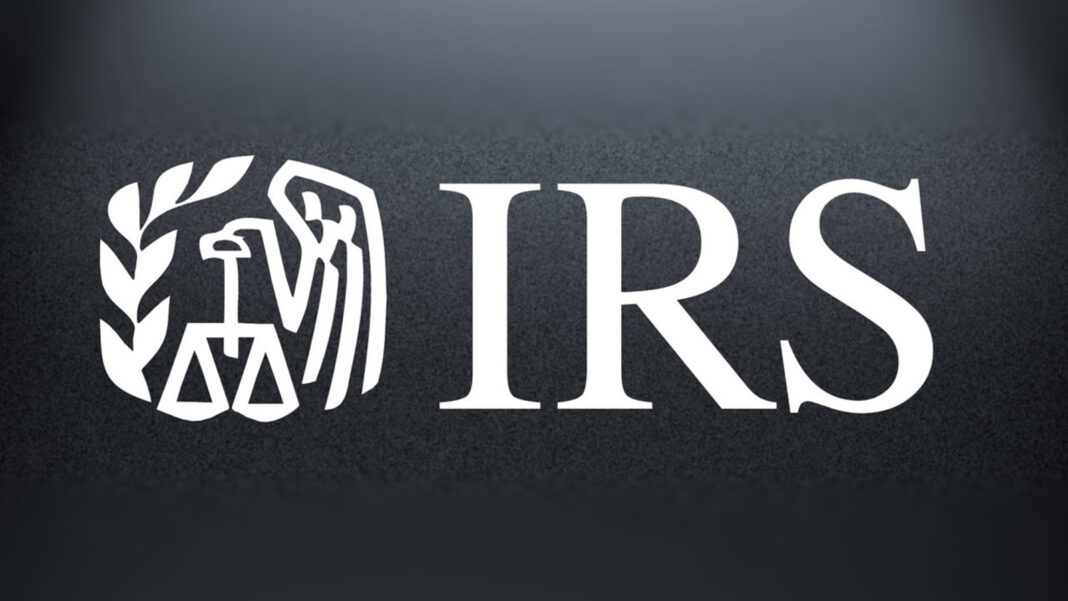Focus on taxpayer impact of processing and refund delays
Washington – National Taxpayer Advocate Erin M. Collins today released her 2022 Annual Report to Congress, saying taxpayers and tax professionals “experienced more misery in 2022” due to paper processing delays and poor customer service. But the report also says the Internal Revenue Service made considerable progress in reducing the volume of unprocessed tax returns and correspondence and is poised to start the 2023 filing season in a stronger position.
The Advocate’s report assesses taxpayer service during 2022, identifies the ten most serious problems taxpayers are experiencing in their dealings with the IRS, and makes administrative and legislative recommendations to address those problems. This year’s report recommends specific initiatives that Collins is urging the IRS to include in its plan showing how the additional funding it received in the Inflation Reduction Act will be spent. It also contains two research studies – one on ways to restructure the Earned Income Tax Credit to increase participation among eligible taxpayers while reducing improper payments, and the other designed to help the IRS improve its online operations by studying the functionality of online operations offered by over 40 states and several foreign countries.
Taxpayer service challenges
For most taxpayers, the most important function the IRS performs each year is issuing timely tax refunds. In 2022, about two-thirds of individual taxpayers were entitled to refunds, and the average refund amount was nearly $3,200. The report says the IRS failed to meet its responsibility to pay timely refunds to millions of taxpayers for the third year in a row. About 13 million individual taxpayers filed paper returns. Because of paper processing delays, refunds for these taxpayers were delayed, generally by six months or longer. Millions of e-filed individual returns were “suspended” because they tripped IRS processing filters and required manual review by IRS employees before refunds could be released. Hundreds of thousands of business returns claiming the Employee Retention Tax Credit were delayed.
However, the report says the IRS will be starting the 2023 filing season in much better shape than the last two years. The IRS began 2022 with an unprocessed paper backlog of 4.7 million original individual returns (Forms 1040), 3.2 million original business returns, and 3.6 million amended returns (individual and business combined). When the Advocate’s report went to press in mid-December 2022, the IRS had reduced those backlogs to 1 million original individual returns, 1.5 million original business returns, and 1.5 million amended returns. By Dec. 23, the IRS had further reduced its unprocessed paper backlog of original individual returns to about 400,000 and original business returns to about 1 million. This significant reduction in the paper return inventory will enable the IRS to begin processing paper-filed tax year 2022 returns during the upcoming filing season. That contrasts with the previous two years, when the IRS was not able to process current-year returns until months after the filing season had ended.
The number of returns suspended during processing is the only significant return category in which inventories increased. The IRS entered 2022 with an inventory of 4.2 million suspended returns. The inventory grew to 5.9 million suspended returns by mid-December.
Cases involving suspected identity theft account for about half the inventory of suspended returns. In mid-December, the IRS reported 2.9 million identity theft cases in its inventory.
While some will turn out to be fraudulent claims, the IRS website as of January 9 states, “[D]ue to extenuating circumstances caused by the pandemic, our identity theft inventories have increased and on average it is taking about 360 days to resolve identity theft cases.”
The report calls a year-long delay “unacceptable” and urges the IRS to assign additional employees to process these cases.
The IRS sent millions of notices to taxpayers during 2022. These included 17 million math error notices, Automated Underreporter notices (where an amount reported on a tax return did not match the corresponding amount reported to the IRS on a Form 1099 or other information reporting document), notices requesting a taxpayer authenticate identity where IRS filters flagged a return as potentially fraudulent, correspondence examination notices, and some collection notices. Notices often require written taxpayer responses. If the IRS did not process a taxpayer response, it may have taken adverse action against the taxpayer or not released the refund claimed on the tax return. During fiscal year (FY) 2022, it took the IRS an average of 193 days to process taxpayer responses to proposed tax adjustments – about six months. That compares with 89 days in FY 2019, the most recent pre-pandemic year. The report also calls the delays in resolving these cases unacceptable.
The IRS received 173 million calls during FY 2022. Only 22 million (13%, or roughly one out of eight calls) got through to an IRS employee. As a result, most callers could not get answers to their tax-law questions, receive help with their account problems, or speak with an employee about compliance notices. Those who got through waited an average of 29 minutes on hold before the call began.
Telephone service for tax professionals was worse than the prior year and hit an all-time low. Because tax professionals prepare the majority of tax returns and often call with complex account-specific questions, the IRS has established a Practitioner Priority Service (PPS) telephone line to handle their calls. In FY 2022, IRS employees answered only 16% of PPS calls (fewer than one out of six), and the average hold time for those who got through was 25 minutes. Telephone delays place tax professionals in the difficult position of billing clients for the time spent trying to reach the IRS or writing off that time. “Tax professionals are key to a successful tax administration,” Collins wrote. “The challenges of the past three filing seasons have pushed tax professionals to their limits, raising client doubts in their abilities and creating a loss of trust in the system.”
Outlook for 2023
In the report’s preface, Collins predicted that taxpayer service will improve in 2023. “We have begun to see the light at the end of the tunnel,” she wrote. “I am just not sure how much further we have to travel before we see sunlight.”
The report cites three reasons for optimism: (1) the IRS has largely worked through its backlog of unprocessed tax returns, even though it remains challenged with a high volume of suspended returns and correspondence; (2) Congress has provided the IRS with significant additional funding to increase its customer service staffing; and (3) with the benefit of Direct Hire Authority, the IRS has recently hired 4,000 new customer service representatives, and it is seeking to hire 700 additional employees to provide in-person help at its Taxpayer Assistance Centers. Direct Hire Authority has enabled the IRS to reduce the number of days from the time it posts an announcement on USAJobs.gov until it onboards a new employee by more than half.
But Collins warned the improvements will not be immediate. “Staff increases come with growing pains,” she wrote. “As new employees are added, they must be trained. For most jobs, the IRS does not maintain a separate cadre of instructors. Instead, experienced employees must be pulled off their regular caseloads to provide the initial training and act as on-the-job instructors. In the short run, that may mean that fewer employees are assisting taxpayers, particularly experienced employees who are likely to be the most effective trainers.”
She also pointed out that until additional fully-trained employees are on board, taxpayer service will continue to be a zero-sum game. For example, customer service representatives in the Accounts Management function split their time between answering the phones and processing taxpayer correspondence. If the IRS assigns more employees to answer the phones, correspondence processing will be slower. If the IRS assigns more employees to process correspondence, phone service will decline.
“The IRS will have to perform a difficult balancing act with its current resources and will need to ensure it does not create a new paper backlog in 2023 by reassigning too many Accounts Management employees from processing case inventories to answering the phones,” Collins wrote. “The IRS needs to end the vicious cycle of paper backlogs. As employees are trained and report for duty, I expect we will start to see improvements in service, probably by the middle of 2023.”
Taxpayer Advocate Service administrative recommendations to the IRS
In August 2022, Congress enacted the Inflation Reduction Act (IRA), which provided the IRS with funding of nearly $80 billion over the next ten years to supplement its annual appropriations. While the funding earmarked for tax law enforcement has been controversial, the legislation included supplemental funding of $3.2 billion for taxpayer services, including pre-filing assistance and education, filing and account services, and taxpayer advocacy services; $4.8 billion to enable the IRS to continue modernizing its information technology (IT) systems, including advancement of customer callback and other technology to provide a more personalized customer experience; and $25.3 billion to support taxpayer services and other operations. The report said that this additional funding could be a gamechanger for taxpayers and tax professionals.
“If spent wisely, this funding will give IRS management the tools it needs to bring U.S. tax administration into the 21st century by enabling it to hire and train the workforce of the future, replace antiquated IT systems, and generally revamp the taxpayer experience based on principles of fair and equitable tax administration,” Collins wrote.
In an August 17, 2022 memorandum, the Secretary of the Treasury directed the IRS Commissioner to produce an operational plan within six months that details how the additional IRA funding will be spent. In the report’s preface and in discussing the 10 most serious taxpayer problems, Collins recommends numerous initiatives for inclusion in the plan, including the following:
1. Hire and train more human resources employees to manage hiring all IRS employees. The report says that staffing shortages in the IRS’s Human Capital Office (HCO) are, ironically, one of the biggest obstacles to hiring and onboarding more employees. HCO, which coordinates all IRS hiring, does not have enough staff to review and approve new position descriptions, post job announcements, and screen incoming applications and can become a bottleneck. Without HCO involvement, other IRS divisions cannot hire employees even when they have funding. TAS recommends the IRS use some of its IRA funding to quickly bolster its HCO staff and, in the interim, provide creative alternatives, including enabling the business units to do their own hiring so new employees can be selected, while also working to expedite security checks and the onboarding of new employees.
2. Ensure all IRS employees – particularly customer-facing employees – are well-trained to do their jobs. From a taxpayer perspective, getting through to a live IRS telephone assistor or having taxpayer correspondence processed quickly are important, the report says, but it is even more important that the responding IRS employee have enough knowledge to handle the question or issue properly. The combination of budget cuts beginning in FY 2011 and continuing until the last few years and the COVID-19 pandemic has limited the IRS’s ability to provide adequate training to new employees and to provide regular updates and refresher training to its existing workforce. “Training must go hand-in-hand with hiring, and it must continue throughout employees’ careers with the IRS, with a continuing focus on taxpayer rights,” the report says. “Doing work incorrectly can be worse than not doing it at all.”
3. Create robust and accessible online accounts with functionality comparable to that of private financial institutions and through which taxpayers and practitioners can access, download, and upload material information. Of all the steps the IRS can take to improve the taxpayer experience, the report says that creating robust online accounts should be the highest priority and will be the most transformational. Most Americans have been conducting business with financial institutions digitally for two decades or more – paying bills, transferring funds, depositing checks, applying for loans, trading stocks and mutual funds, etc. TAS recommends that the IRS prioritize developing online accounts with comparable functionality – the ability to file tax returns, make payments, view transactions, receive or view tax adjustments or other notices, respond to tax adjustments or other notices, upload and download documents, and submit questions or live chat with an IRS employee – which often will eliminate the need for visiting, calling, or sending correspondence.
4. Temporarily expand uses of the Documentation Upload Tool (DUT) or similar technology. The IRS has made it possible for taxpayers in some circumstances to provide requested information online rather than by snail mail. For example, an auditor requesting documentation to support a taxpayer’s business deductions or charitable contributions may provide the taxpayer with a link and passcode so the taxpayer can upload the documentation and not have to mail it in. Eventually, this functionality should be rolled into IRS online accounts. Until that happens, TAS recommends broader use of the DUT to reduce the burden on taxpayers and allow the IRS to resolve issues more quickly.
5. Improve the readability of tax transcripts. The IRS utilizes codes for various transactions, and these codes are included on the transcripts provided to taxpayers and their representatives. However, the codes are incomprehensible to the non-tax professional, and even tax professionals often struggle to decipher them. TAS recommends the IRS revamp the presentation of tax transcripts to substitute descriptions for the codes or at least include a glossary on a separate piece of paper that explains – in plain language – what each code on the transcript means.
6. Enable all taxpayers to e-file their tax returns. Over 90% of individual taxpayers now e-file their income tax returns, but the IRS still receives millions of paper tax returns each year (about 13 million individual returns and millions of additional business returns last year). Some taxpayers would prefer to e-file but cannot do so. This can happen if the taxpayer must file a form or schedule that IRS systems are not yet programmed to accept electronically, if a return is rejected by IRS’s systems for violating a programming rule, or if a taxpayer must attach documentation to the return (e.g., an appraisal or disclosure) and the tax return software the taxpayer is using does not allow for the transmission of attachments.
There are steps the IRS can take to address all three of these limitations. It can modernize its e-filing platform to accept all IRS forms and schedules and taxpayer attachments. It can accept and review returns that violate some IRS systems’ programming rules; otherwise, the taxpayer whose return is rejected must file it on paper, requiring the IRS to transcribe it. And if some software packages allow taxpayers to submit attachments and others do not, the IRS can post a list of software packages that allow attachments online. That way, taxpayers with attachments will know which packages they can use to e-file their returns. “If the IRS makes it possible for all taxpayers to e-file their returns,” the report says, “the number of paper-filed returns is likely to drop dramatically.”
National Taxpayer Advocate “Purple Book”: Legislative recommendations to strengthen taxpayer rights and improve tax administration
The National Taxpayer Advocate’s 2023 Purple Book proposes 65 legislative recommendations for consideration by Congress. Among them are the following:
1. Amend the “Lookback Period” to allow tax refunds for certain taxpayers who took advantage of the postponed filing deadlines due to COVID-19. To be eligible to receive a tax refund, any tax payments at issue must have been paid within a “lookback period” of three years, plus the period of any extension of time to file. Absent an extension, refunds generally may not be paid more than three years beyond the tax return filing due date of April 15. Because of the pandemic, the IRS postponed the tax return filing deadline to July 15 in 2020 and to May 17 in 2021. Unlike an extension, a postponement does not extend the lookback period. Therefore, some taxpayers who took advantage of the postponement and filed their returns up to July 15, 2020, may assume that they have three years – up to July 15, 2023 – to file refund claims. But if they do not file their claims by April 18 (extended three days because of a weekend and holiday), the claims generally cannot be paid. A similar issue will arise in 2024 because the IRS postponed the 2021 filing deadline to May 17. This result was not anticipated and will prevent some taxpayers from receiving the full refunds to which they are otherwise entitled. TAS recommends Congress extend the lookback period for receiving refunds to align with any postponements of the filing deadline.
2. Authorize the IRS to establish minimum standards for paid tax return preparers. Most taxpayers hire tax return preparers to complete their returns, and visits to preparers by Government Accountability Office and Treasury Inspector General for Tax Administration auditors posing as taxpayers, as well as IRS compliance studies, have found paid preparers make significant errors that both harm taxpayers and reduce tax compliance. Ten years ago, the IRS sought to implement minimum preparer standards, including requiring otherwise non-credentialed preparers to pass a basic competency test, but a federal court concluded the IRS could not do so without statutory authorization. TAS recommends Congress provide that authorization.
3. Expand the U.S. Tax Court’s jurisdiction to adjudicate refund cases and assessable penalties. Under current law, taxpayers who owe tax and wish to litigate a dispute with the IRS must go to the U.S. Tax Court, while taxpayers who have paid their tax liability and are seeking a refund must sue in a U.S. district court or the U.S. Court of Federal Claims. Although this dichotomy between deficiency cases and refund cases has existed for decades, TAS recommends Congress give taxpayers the option to litigate both deficiency and refund disputes in the U.S. Tax Court. Due to the tax expertise of its judges, the Tax Court is often better equipped to consider tax controversies than other courts. It is also more accessible to unsophisticated and unrepresented taxpayers than other courts because it uses informal procedures, particularly in disputes that do not exceed $50,000 for one tax year or period.
4. Modify the requirement that written receipts acknowledging charitable contributions must pre-date the filing of a tax return. To claim a charitable contribution, a taxpayer must receive a written acknowledgement from the donee organization before filing a tax return. For example, if a taxpayer contributes $5,000 to a church, synagogue, or mosque, files a tax return claiming the deduction on February 1, and receives a written acknowledgement on February 2, the deduction is not allowed – even if the taxpayer had credit card receipts and other documentation that fully substantiates the deduction. This requirement is inconsistent with congressional policy to encourage charitable giving. TAS recommends that Congress modify the substantiation rules to require reliable – but not necessarily advance – acknowledgement from the donee organization.
5. Restructure the Earned Income Tax Credit (EITC) to make it simpler for taxpayers and reduce improper payments. TAS has long advocated for dividing the EITC into two credits: (i) a refundable worker credit based on each individual worker’s earned income unrelated to the presence of qualifying children and (ii) a refundable child credit. For wage earners, claims for the worker credit could be verified with nearly 100% accuracy by matching claims on tax returns against Forms W-2, reducing the improper payments rate on those claims to nearly zero. The portion of the EITC that currently varies based on family size would be combined with a child credit into a larger family credit. The National Taxpayer Advocate published a report making this recommendation in 2019, and TAS continues to advocate for it. This report contains a research study assessing alternative structures for implementing TAS’s recommendation.
6. Expand the protection of taxpayer rights by strengthening the Low Income Taxpayer Clinic (LITC) program. The LITC program effectively assists low-income taxpayers and taxpayers who speak English as a second language. When the LITC grant program was established in 1998, the law limited annual grants to no more than $100,000 per clinic. The law also imposed a 100% “match” requirement (meaning a clinic cannot receive more in LITC grant funds than it is able to match on its own). The nature and scope of the LITC program has evolved considerably since 1998, and those requirements are preventing the program from providing high quality assistance to eligible taxpayers. While the recently enacted Consolidated Appropriations Act, 2023, raised the per-clinic cap to $200,000 for the current year, TAS recommends that Congress remove or substantially increase the per-clinic cap permanently and allow the IRS to reduce the match requirement to 25% where doing so would facilitate coverage for additional taxpayers.
Other sections in the report
The report contains a taxpayer rights assessment that presents performance measures and other relevant data, a description of TAS’s case advocacy operations during FY 2022, a summary of key TAS systemic advocacy accomplishments, and a discussion of the 10 federal tax issues most frequently litigated during the preceding year. For the second year, the section on most litigated tax issues contains an analysis of substantially all cases petitioned in the Tax Court rather than simply decided cases, providing a much broader view of issues taxpayers bring to court. Also, for the second time, the report includes a section titled “At a Glance,” which provides concise summaries of the 10 “most serious problems.” It is intended to give readers a quick overview of each issue so they can decide which ones they want to read about in depth.
Please visit https://www.taxpayeradvocate.irs.gov/AnnualReport2022 for more information.









